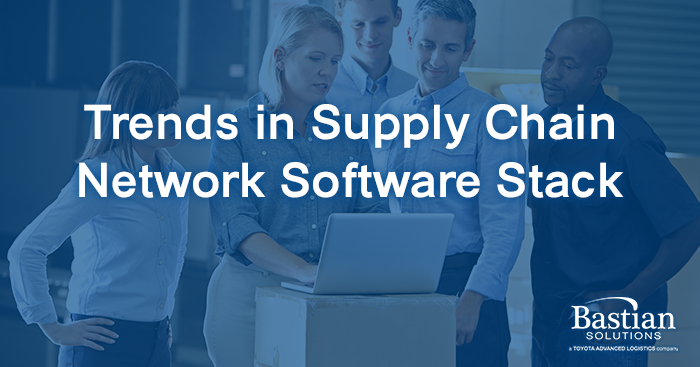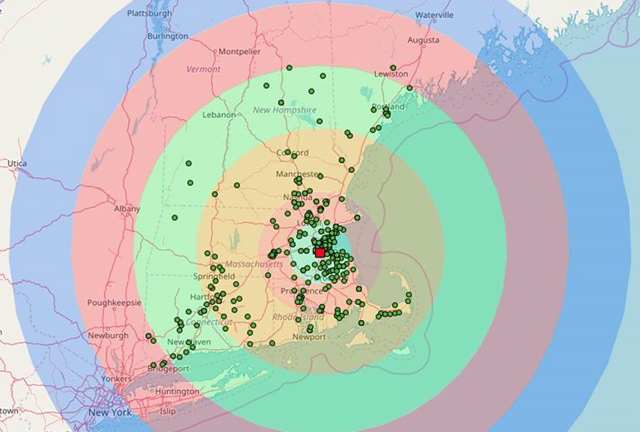
Trends in Supply Chain Network Software Stack
Mike Prince | 27 December 2018
As companies work to optimize their supply chains, three historically large costs are typically under scrutiny: inventory, facilities, and transportation. The first question that often comes up is what tools are available to help? In this article, we will discuss several categories of tools that are commercially available (or already on your desktop) that can help analyze and optimize the supply chain.
Before we get into tools and methods, a few things to keep in mind:
- Analyses of this nature can be very data intensive. In a typical supply chain optimization project, a full year’s worth of order and P&L data is often requested to ensure that any recommendations account for seasonality or other peaks/events in the supply chain.
- An important consideration is that optimization tools are generally strategic in nature. It is not common to model a supply chain at a discrete order or product level. Products get aggregated to product group levels, customers often get grouped, etc.
Network Analysis Software Options
So, what are some of the tools at our disposal when undertaking a supply chain network analysis?
Centroid Analysis
Typically, this is a reasonably simple analysis that will assign weights to supply or destination nodes and calculate a weighted center of gravity. This level of analysis can be supported through database or spreadsheet analysis and requires knowledge of the volume assigned to each supply or destination point as well as the point’s latitude and longitude. With this information, a centroid can be a powerful tool to determine the “best” place to locate a distribution center to service known locations.
Things to look out for in a centroid analysis are changing order distributions and volumetric outliers. Extremely high-volume customers could result in a centroid point being “pulled” toward them, while a high density of single-time customers could also impact accuracy. But, this tool is an easy, economical way to pinpoint candidate locations of a new facility or validate the location of a current facility.
Transportation Optimizers
These are spreadsheet-based add-ins that enable the rating of large quantities of freight/orders or assess the impact of freight mode changes. This can be useful to determine the costs to serve a known customer base from one or more candidate locations. This can help to narrow down the candidates or pick the eventual distribution point.
Typical features are point-to-point distance calculations, multi-carrier comparison and rate shopping, and some add-ins will assist with geocoding (assignment of coordinates based on address or zip code). This class of tool is often used in conjunction with a centroid analysis and can be used to plan an entire supply chain network.
Being fairly simple, there can be limitations to these tools; they typically rate parcel and LTL freight only, although custom rates can be input. If sequenced route stops, multi-modal or international freight are in play, these tools may not be the right fit. But for simple to medium-complexity networks, these tools are quite powerful, efficient and cost-efficient.
Inventory Optimizers
Like transportation tools, these tools can help deploy inventory across a network to support service targets. However, the math behind calculating inventory is more complicated (start with the definition of Safety Stock – the variability of item demand during lead time, which is far more complex than a rate lookup). As a result, there are few stand-alone packages that claim to optimize inventory levels across a network, and the ones that are out there are far more tactical than strategic in nature. However, there are network optimizers that are starting to include inventory optimization in their scope.
Network Optimization
Network optimization software packages are robust, math-based models that include in their scope the models listed above, as well as robust databases and mixed-integer linear programming logic to be able to solve complex supply chain network scenarios quickly and accurately.
These models, of which there are several commercially available, can model networks from raw materials source to end customer, incorporating manufacturing of parts or finished goods, distribution and transportation. Other areas easily handled by these models are multi-tier distribution, multiple freight modes, international logistics and the ability to quickly and easily evaluate multiple scenarios.
Many of the newer generations of these models include the ability to plan inventory, generate sequenced route stops, and do simulations that can get to a much more granular level than optimization.

Caveats of Supply Chain Network Analysis Software
So, what are the downsides of owning one of these models? Some common ones are listed below:
- Cost – most models now work on a monthly or annual subscription model, and the costs can be significant. Once a model is generated, it cannot be accessed or modified without an active software package.
- Steep learning curve – most models are substantial frameworks, requiring extensive data loading, configuration and calibration to have a working model. Each user requires rigorous training, and if the user is not regularly running models (dedicated personnel), the knowledge can fade quickly, especially as the software continues to evolve.
- Not plug and play – the models require definition of candidate locations for a scenario – the user has to use external tools to “seed” the model. Additionally, the user of the model must be well-versed in the goals of the optimization and have the knowledge and experience to be able to interpret the model results. Often several (very different) multi-million scenarios will be separated by a matter of dollars – it takes a skilled analyst to sort through this to identify the most practical solution. I will borrow a term a colleague coined many years ago – “Work the tool, don’t let the tool work you.”
- Garbage in = Garbage out – An overused expression, but used here to emphasize the need for quality data in these analyses. No amount of in-model data manipulation will turn poor data into good data (hint: a baselining process will quickly identify bad data). You may have a very good-looking output, but if the underlying data is suspect, so will be your result.
- Lack of a baseline – the foundation for every successful network project I have ever been involved in is a baseline model. This proves that you have set up a model which accurately reflects current-state operations. Conversely, a modified baseline takes the baseline and grows it out to the target year. All scenarios get compared to the modified baseline.
Hopefully this article has helped you understand the various levels of supply chain network tools that can be used to optimize parts of a network (and some tips on their use). Undertaking a supply chain modeling initiative is a major undertaking, but the results on the bottom line can be significant as well. Bastian Solutions has been working with these models for many years across many clients, projects and industries, and we stand ready to help you with your supply chain modeling needs and challenges.
Mike Prince is a Senior Consulting Engineer in the Bastian Solutions Consulting division. In this role, Mike leads client designs and engagements across many Bastian practice areas. Mike has more than 30 years of technical and leadership experience working across the Supply Chain and assisting clients in achieving their strategic and operational goals.
Comments
No comments have been posted to this Blog Post
Leave a Reply
Your email address will not be published.
Comment
Thank you for your comment.